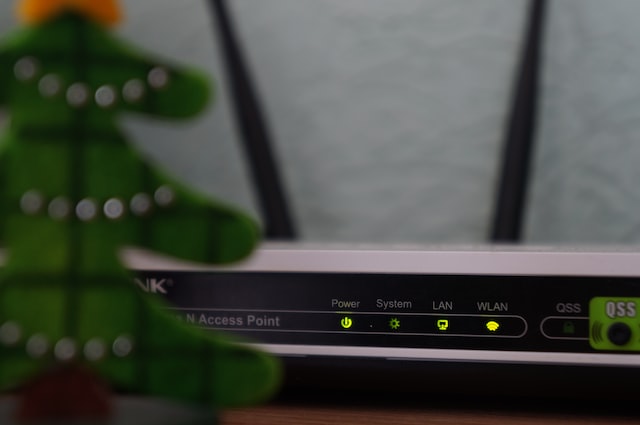In order to best understand how to increase your Wi-Fi range, it is first important to understand exactly what Wi-Fi is and why people want a strong signal. Wi-Fi is a wireless networking technology that allows devices to connect to the internet without the use of cables.
This is extremely convenient for users as it allows them to move around freely without having to worry about being tethered to a physical connection. The downside of this convenience is that Wi-Fi signals can be quite weak and easily blocked by physical obstacles, which is why people often want a stronger signal.
There are several ways that you can increase your Wi-Fi range, which will be outlined in the rest of this article.
1st way: Move your router to a new location
If your router is in a central location in your home, moving it to the edge of your home can increase your Wi-Fi range. This is because the further away your router is from obstacles, the better signal it will have.
Another way to increase your Wi-Fi range is to add a second router. You can use one router as an access point and extend the range of your Wi-Fi network by adding a second router. This will give you two wireless networks that you can connect to from different parts of your home.
You can also try using a powerline adapter. Powerline adapters use the electrical wiring in your home to create a second network. These adapters are easy to set up and can be a great way to extend your Wi-Fi range if you have trouble getting a good signal in certain areas of your home.
2nd way: Check for interference
If you live in a crowded area, there are probably a lot of devices competing for the same wireless signal. This can lead to slower speeds and shorter range for your devices. To check for interference, look at the list of devices that are connected to your router. If there are a lot of devices, try disconnecting some of them to see if that improves your speed. You can also try changing the channel that your router is using.
3rd way: Change your Wi-Fi channel
If your home is like most, your Wi-Fi router is probably defaulted to channel 6. But if you live in a crowded neighborhood, with lots of other people using the same wireless frequencies as you are, that can lead to interference and slow speeds.
Luckily, it’s easy to change your Wi-Fi channel to one that’s less congested. Here’s how:
1. Open your router’s web interface in your browser. The address is usually something like 192.168.0.1 or 192.168.1.1; if that doesn’t work, check your router’s documentation or do a web search for its address.
2. Log in with the username and password for your router (again, consult your documentation or do a web search if you don’t know these).
4th way: Get a range extender
If your home Wi-Fi network doesn’t reach every corner of your house, a range extender can help. A range extender, also known as a wireless repeater, takes the signals from your router and amplifies them to extend the Wi-Fi signal further into your home.
A range extender is easy to set up and can be done in a matter of minutes. All you need to do is place the range extender near your router and connect it to your network. Once it’s connected, you can move it to a more convenient location.
Range extenders are an affordable way to increase your Wi-Fi range without having to replace your router. And they’re easy to set up, so you can start enjoying better Wi-Fi coverage in no time.
If you’re looking to extend the range of your Wi-Fi network, you may want to consider using ADSL. ADSL is a type of Internet connection that uses phone lines to deliver high-speed Internet. While it’s not as fast as other types of Internet connections, it can be a good option for expanding your Wi-Fi range.
Here are a few things to keep in mind if you’re considering using ADSL for your Wi-Fi network:
Positron ADSL extender is best for small to medium-sized homes. If you have a large home or office, you may want to consider another type of Internet connection.
ADSL is a good option if you live in an area with poor cell phone coverage. Since ADSL relies on phone lines, it can be a more reliable option in areas with weak cell signals.
5th way: Use outdoor antennas
If your router is near a window, you can try using an outdoor antenna to extend your Wi-Fi range. Outdoor antennas are available for both home and business use.
For the home user, there are two main types of outdoor antennas: directional and omnidirectional. Directional antennas are best if you have a clear line of sight to your router. If your house is surrounded by trees or other obstacles, an omnidirectional antenna will work better.
If you have a business with a Wi-Fi network, you can also use an outdoor antenna to extend your range. Businesses typically use directional antennas because they can be aimed at the specific area where the Wi-Fi signal needs to be improved.
Outdoor antennas can be purchased for as little as $50 and can significantly improve your Wi-Fi range.
Conclusion: Summarize the 5 ways and tell the reader which one(s) worked best for you.

















